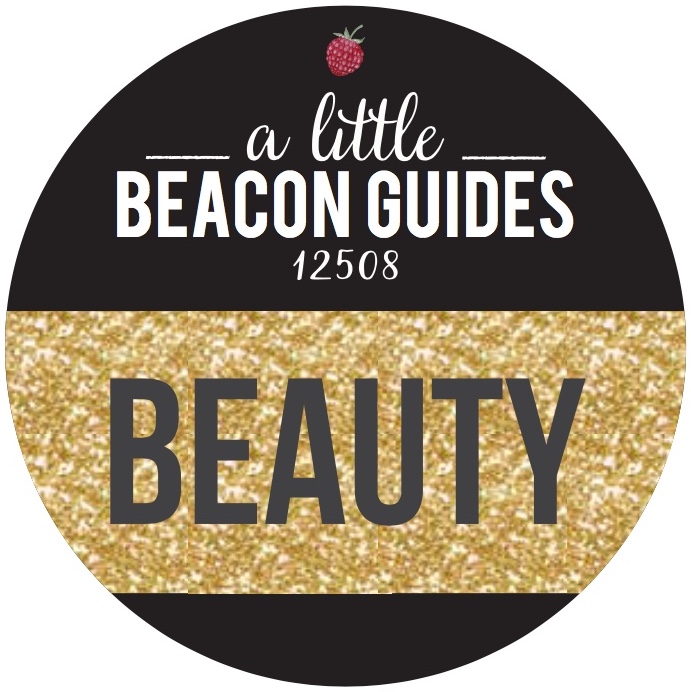The Land Surveyor With The 1867 Atlas Tattoo of (Pre)Beacon (When Named Fishkill Landing and Matteawan)
/Maps in this photo are from the David Rumsey collection, and the house in the woods is from an old postcard from the Beacon Historical Society’s collection. As of this writing, we have not confirmed where that house is. The tattoo pictured is on the arm of Tom Cerchiara, made by Evan McGuigan at Graceland Tattoo.
Photo Credit: Collage from A Little Beacon Blog
When A Little Beacon Blog’s Real Estate Guide got the listing for 119 Howland Avenue, we were immediately intrigued by the old house with the four fireplaces. Clearly it was built in a different time with its many bedrooms and bathrooms, with room for a large family or live-in nanny. It must have been from the 1800s, but when?
Who better to ask than a land surveyor? Beacon is lucky enough to have several good ones in the area. Tom Cerchiara of TEC Land Surveying is who I thought of first, as my design agency rebranded his logo and website. That rebranding project exposed me to the profession of a land surveyor, where they deeply research the histories of a property to determine boundaries, ownership rights, and much more. So I had a feeling Tom may know the origins of this house.
When I asked him, his immediate response was: “That house is on the 1867 Atlas.”
The 1867 Atlas
Photo Credit: Screenshot of the 1867 Atlas on David Rumsey’s website and part of his collection.
What atlas, I thought? There’s an atlas? Yes. Tom explained that years ago, detailed maps were made of regions, and each map included different properties and information on them. These have been relied upon by surveyors as they research a property and look for clues.
A man named David Rumsey, who has a deep history with technology and archives, has published several of these maps on his website, even winning awards and recognition for this contribution. You can see the 1867 one titled “Fishkill on the Hudson and Matteawan” right here (the area was actually called Fishkill Landing and Matteawan, but the atlas called it “Fishkill on the Hudson”). This is a map of what is known as Beacon now, before it was called Beacon.
Prior to being known as Beacon, the area was officially two names: “Fishkill Landing, near the Hudson River and its busy ports, which incorporated as a village in 1864; and Matteawan, an industrial hub located near the Fishkill Creek, which incorporated in 1886” as explained in this article from Diane Lapis of the Beacon Historical Society that is part of A Little Beacon Blog’s Postcards series.
The Tattoo
“The 1867 Atlas is tattooed on my arm. And that house is represented right here.” Tom pointed to a black marking on his arm.
Wait, what? Tattooed? I knew that Tom had gotten a tattoo last year by Evan McGuigan who made the tattoo at Graceland Tattoo, and I remembered that it was a map of Beacon. But at the time, that’s all it was - a map of Beacon. Now that I’d gone on my own historical property search leading me to the 1867 Atlas of Fishkill and Matteawan, this all became more curious.
The Previous Owner of 119 Howland Avenue From 1867
Back at the computer, Tom zoomed in on the map, and saw that the property was attributed to Frank B. Goodrich, a well-known writer. According to an article at Lehigh University, Frank lost his eyesight, preventing him from earning a living, and retired to a country home (now known as 119 Howland Avenue) in the Hudson Valley.
Excerpted from the Lehigh University article:
Frank Goodrich was born in Hartford, CT, to Mary Boott Goodrich and Samuel Griswold Goodrich, the popular author of the "Peter Parley" tales of geography and adventure. After graduating from Harvard in 1845, Goodrich moved to Paris when his father was chosen as the United States consul. Goodrich’s literary career began there when, under the pseudonym of "Dick Tinto," he wrote letters to the New York Times about Paris and its government (J. Derby 123). These letters, which his obituary describes as “remarkable for their perception of character, correct judgment of events, and sagacity in political prediction,” were collectively published as Tricolored Sketches of Paris. Goodrich’s most well known works include The Court of Napoleon, Man upon the Sea, The Tribute Book, and Women of Beauty and Heroism (The Goodrich Family in America)…
After his eyesight failed him, preventing him from earning a living, Goodrich went abroad for several years before seeking his retirement at a country house on the Hudson. He spent his later years in New York City, retaining a lively interest in politics but living a quiet life due to his eyesight.
Here is a picture of the house and what it looks like now. It is currently for sale, and you can see more pictures here.








































